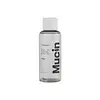What's inside
What's inside
 Key Ingredients
Key Ingredients

 Benefits
Benefits

 Ingredients Side-by-side
Ingredients Side-by-side

Dioscorea Villosa Root Extract 68%
Skin ConditioningWater
Skin ConditioningButylene Glycol
HumectantGlycerin
HumectantPanthenol
Skin Conditioning1,2-Hexanediol
Skin ConditioningCarbomer
Emulsion StabilisingArginine
MaskingPentylene Glycol
Skin ConditioningSodium Hyaluronate
HumectantSodium Hyaluronate Crosspolymer
HumectantHydrolyzed Hyaluronic Acid
HumectantHyaluronic Acid
HumectantHydrolyzed Sodium Hyaluronate
Skin ConditioningCentella Asiatica Leaf Water
Skin ConditioningEthylhexylglycerin
Skin ConditioningDioscorea Villosa Root Extract 68%, Water, Butylene Glycol, Glycerin, Panthenol, 1,2-Hexanediol, Carbomer, Arginine, Pentylene Glycol, Sodium Hyaluronate, Sodium Hyaluronate Crosspolymer, Hydrolyzed Hyaluronic Acid, Hyaluronic Acid, Hydrolyzed Sodium Hyaluronate, Centella Asiatica Leaf Water, Ethylhexylglycerin
Terminalia Bellerica Fruit Water
Skin ConditioningPolyglyceryl-4 Caprate
EmulsifyingGlycerin
HumectantPhenoxyethanol
PreservativeGlutathione
Ethylhexylglycerin
Skin ConditioningHydrolyzed Hyaluronic Acid
HumectantSodium Lauroyl Lactylate
Emulsifying1,2-Hexanediol
Skin ConditioningPentylene Glycol
Skin ConditioningMethyl Diisopropyl Propionamide
MaskingCeramide NP
Skin ConditioningCeramide AP
Skin ConditioningPhytosphingosine
Skin ConditioningCholesterol
EmollientSodium Benzoate
MaskingXanthan Gum
EmulsifyingCarbomer
Emulsion StabilisingAcetyl Hexapeptide-8
HumectantCeramide EOP
Skin ConditioningTerminalia Bellerica Fruit Water, Polyglyceryl-4 Caprate, Glycerin, Phenoxyethanol, Glutathione, Ethylhexylglycerin, Hydrolyzed Hyaluronic Acid, Sodium Lauroyl Lactylate, 1,2-Hexanediol, Pentylene Glycol, Methyl Diisopropyl Propionamide, Ceramide NP, Ceramide AP, Phytosphingosine, Cholesterol, Sodium Benzoate, Xanthan Gum, Carbomer, Acetyl Hexapeptide-8, Ceramide EOP
Ingredients Explained
These ingredients are found in both products.
Ingredients higher up in an ingredient list are typically present in a larger amount.
1,2-Hexanediol is a synthetic liquid and another multi-functional powerhouse.
It is a:
- Humectant, drawing moisture into the skin
- Emollient, helping to soften skin
- Solvent, dispersing and stabilizing formulas
- Preservative booster, enhancing the antimicrobial activity of other preservatives
Carbomer is a polymer of acrylic acid. Its main role is to create a gel consistency.
A high amount of carbomer can cause pilling or balling up of products. Don't worry, most products contain 1% or less of carbomer.
Ethylhexylglycerin (we can't pronounce this either) is commonly used as a preservative and skin softener. It is derived from glyceryl.
You might see Ethylhexylglycerin often paired with other preservatives such as phenoxyethanol. Ethylhexylglycerin has been found to increase the effectiveness of these other preservatives.
Glycerin is already naturally found in your skin. It helps moisturize and protect your skin.
A study from 2016 found glycerin to be more effective as a humectant than AHAs and hyaluronic acid.
As a humectant, it helps the skin stay hydrated by pulling moisture to your skin. The low molecular weight of glycerin allows it to pull moisture into the deeper layers of your skin.
Hydrated skin improves your skin barrier; Your skin barrier helps protect against irritants and bacteria.
Glycerin has also been found to have antimicrobial and antiviral properties. Due to these properties, glycerin is often used in wound and burn treatments.
In cosmetics, glycerin is usually derived from plants such as soybean or palm. However, it can also be sourced from animals, such as tallow or animal fat.
This ingredient is organic, colorless, odorless, and non-toxic.
Glycerin is the name for this ingredient in American English. British English uses Glycerol/Glycerine.
Learn more about GlycerinHydrolyzed Hyaluronic Acid is a form of hyaluronic acid. It is created by the hydrolysis of hyaluronic acid with a high molecular weight. Once created, Hydrolyzed Hyaluronic Acid has a low molecular weight.
Low molecular weight HA has been shown to hydrate and increase elasticity of the skin. Increasing elasticity is also associated with reduction of wrinkle depth.
One study found topical low molecular weight hyaluronic acid may be considered for the treatment of rosacea in the adult population. However, we always recommend speaking with a professional about your skin concerns.
Hyaluronic acids are a humectant. This means they draw moisture from the air. Hyaluronic acids help moisturize, soothe, and protect the skin.
Read more about other common forms of hyaluronic acid:
Learn more about Hydrolyzed Hyaluronic AcidPentylene glycol is typically used within a product to thicken it. It also adds a smooth, soft, and moisturizing feel to the product. It is naturally found in plants such as sugar beets.
The hydrophilic trait of Pentylene Glycol makes it a humectant. As a humectant, Pentylene Glycol helps draw moisture from the air to your skin. This can help keep your skin hydrated.
This property also makes Pentylene Glycol a great texture enhancer. It can also help thicken or stabilize a product.
Pentylene Glycol also acts as a mild preservative and helps to keep a product microbe-free.
Some people may experience mild eye and skin irritation from Pentylene Glycol. We always recommend speaking with a professional about using this ingredient in your routine.
Pentylene Glycol has a low molecular weight and is part of the 1,2-glycol family.
Learn more about Pentylene Glycol